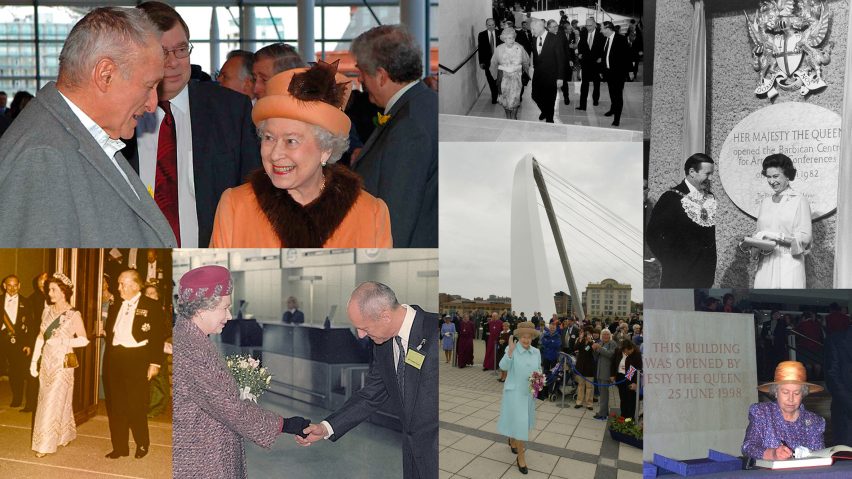
Twenty significant buildings opened by Queen Elizabeth II during her 70-year reign
As people around the world mourn the death of Queen Elizabeth II, who passed away yesterday at the age of 96, we look back at 20 of the most significant buildings she opened during her reign of 70 years, the longest in British history.
Elizabeth II came to the throne on 6 February 1952 at the age of 25 and reigned as Queen of the United Kingdom and 14 other Commonwealth countries until her death on 8 September 2022.
Earlier this year, the UK celebrated her Platinum Jubilee, which marked 70 years since her coronation.
In her record-breaking time on the throne, Queen Elizabeth II cut her fair share of red ribbons, opening numerous public buildings across the UK, Australia and New Zealand in her role as head of state.
Architecture styles have changed dramatically during this time. The Queen opened modernist buildings designed by Basil Spence and Frederick Gibberd, brutalist structures by Powell & Moya and Denys Lasdun, and high-tech creations by Richard Rogers and Norman Foster, as well as more recent contemporary structures by Herzog & de Meuron and WilkinsonEyre.
Read on for 20 of the most significant pieces of architecture officially opened by the Queen, including five museums, two airports, a cathedral, an opera house and no fewer than four parliament buildings.
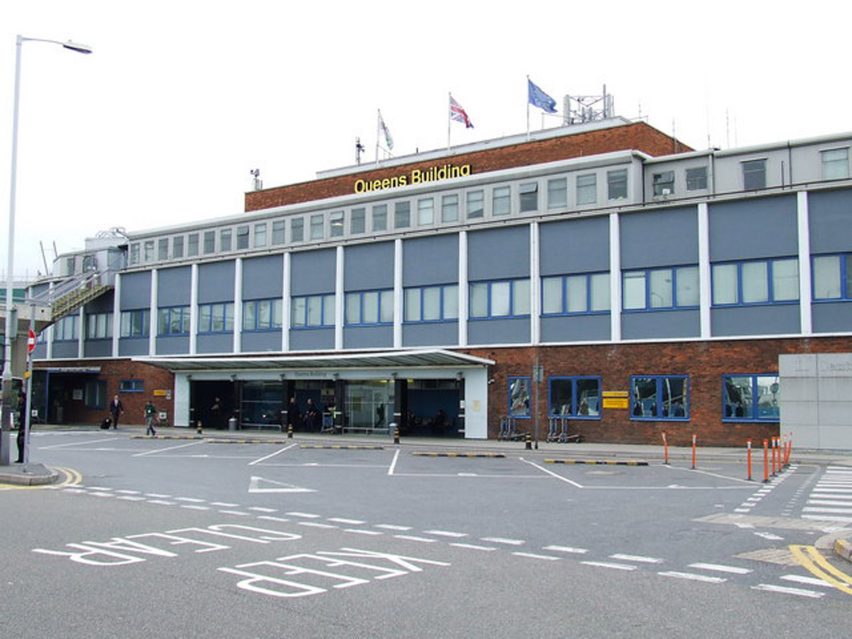
The Queen's Building, Heathrow, England, by Frederick Gibberd (1955)
The Queen inaugurated the modernist central passenger terminal at London Airport in 1955 including the Queens Building designed by English architect Frederick Gibberd, which contained the main passenger entrance to the airport along with airline offices, a cinema, roof gardens and a "grill room".
"We may say with pride that [the airport] ranks among the foremost in the world," she said at the opening.
The Queens Building would later be incorporated into Terminal 2 at the renamed Heathrow airport and was demolished in 2009 to make way for the Foster + Partners-designed terminal. The Queen would later return to the airport in 2008 to open the Rogers Stirk Harbour + Partners-designed Terminal 5.

The Commonwealth Institute, London, England, by RMJM (1962)
The Commonwealth Institute building was designed by Robert Matthew and Stirrat Johnson Marshall from RMJM to hold a permanent exhibition informing the British public about life in the rest of the Commonwealth.
The modernist concrete building, set under a copper-covered, hyperbolic parabaloid roof, was converted into the Design Museum by OMA and John Pawson in 2016.
UK heritage campaign group the Twentieth Century Society was unhappy with the renovation, which saw the exterior kept intact but the interior completely rebuilt, claiming that a "magnificent post-war masterpiece" had been lost.
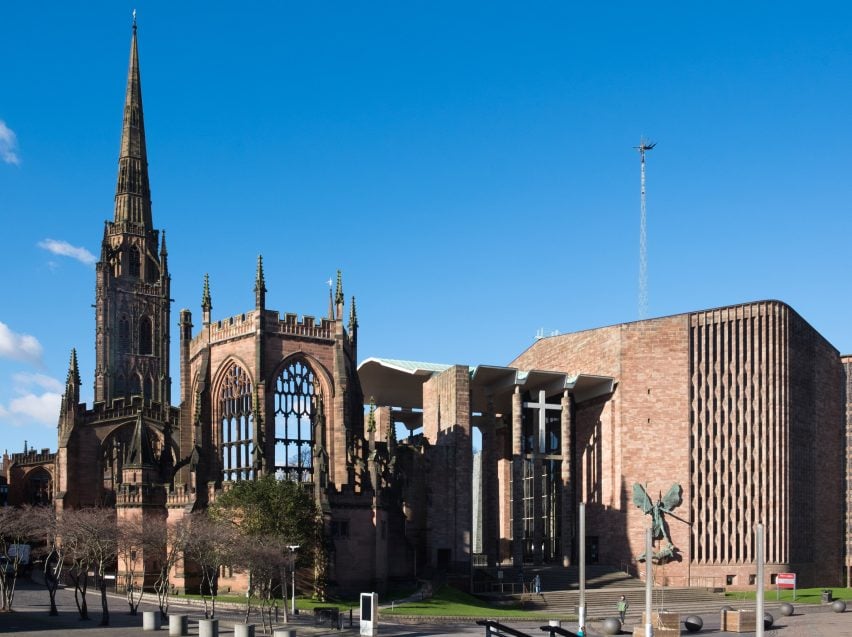
Coventry Cathedral, Coventry, England, by Basil Spence (1962)
In 1962 the Queen attended the consecration of a modern cathedral in Coventry that was designed by Scottish architect Basil Spence to replace the previous 14th-century cathedral, which had been destroyed in bombing during world war two.
The key example of post-war modernism stands alongside the ruins of its Gothic predecessor – a demand that only Spence made among the 200-plus architects in the design competition.
Spence commissioned a number of major artworks for the cathedral including a large sculpture of Archangel Michael triumphing over the Devil by Jacob Epstein, abstract stained glass windows by John Piper and Patrick Reyntiens and a tapestry by Graham Sutherland believed at one time to be the largest in the world.
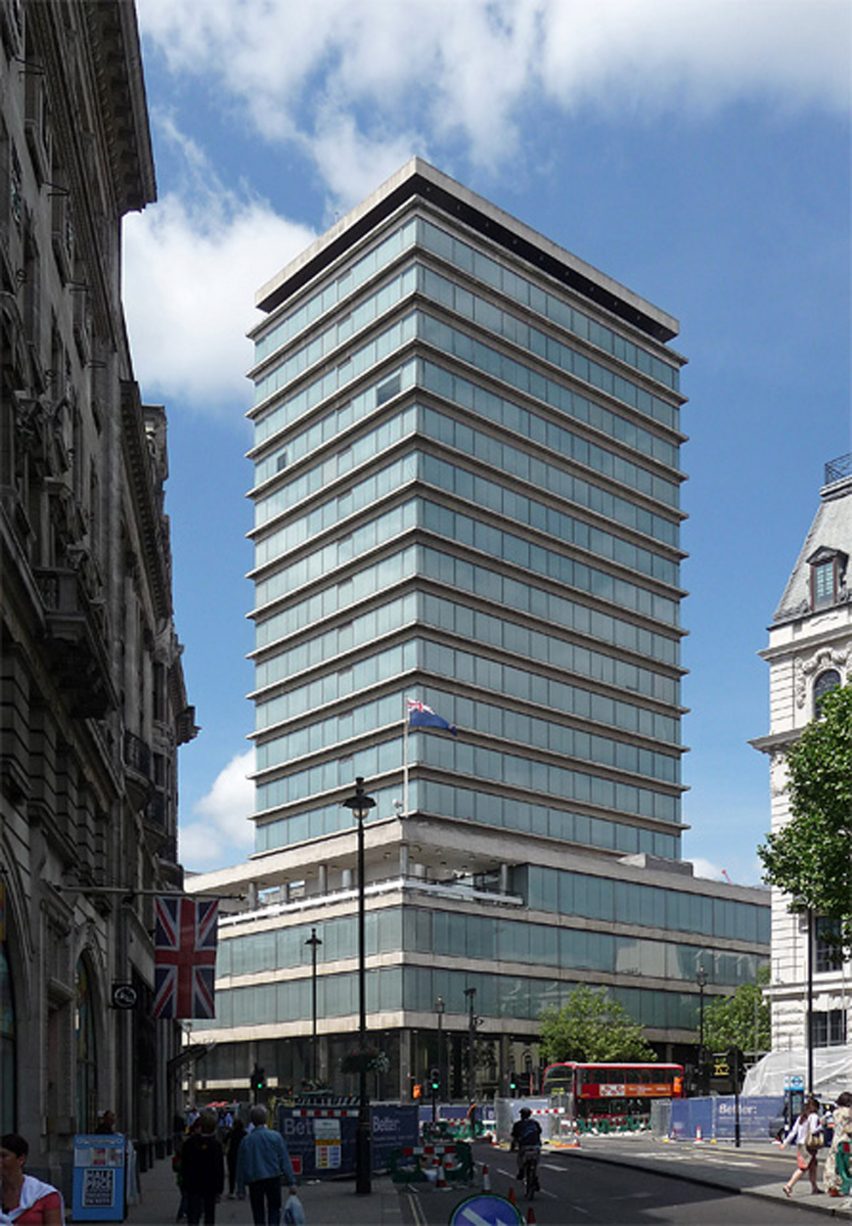
New Zealand House, London, England, by RMJM (1963)
Designed as New Zealand's official presence in Britain, the 15-storey New Zealand House was the third-tallest building in London when the Queen opened it in 1963.
As the first tall office block built in central London after the second world war, the modernist 78-metre-tall block designed by RMJM was controversial at the time, but was grade II-listed in 1990.
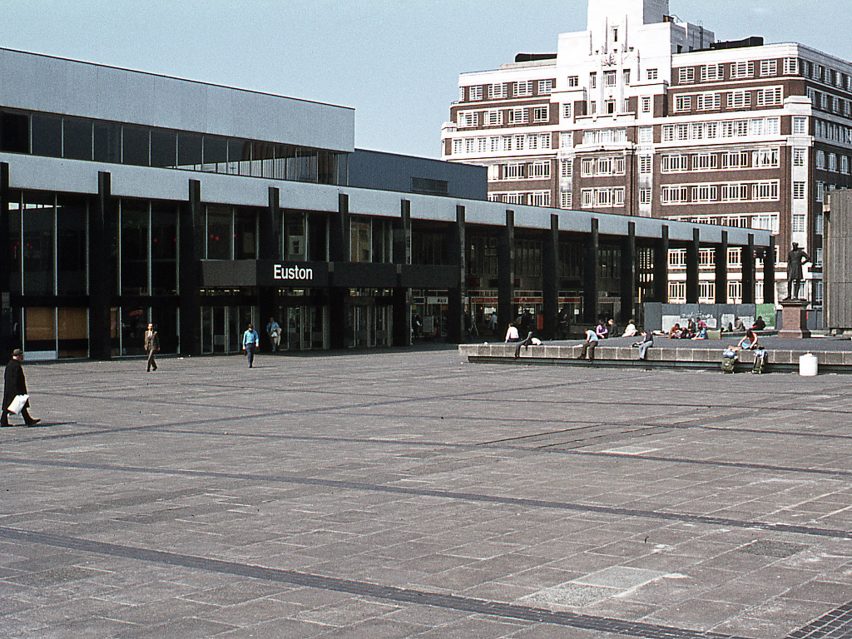
Euston station, London, England, by William Robert Headley and Ray Moorcroft (1968)
Designed by William Robert Headley and Ray Moorcroft in consultation with Richard Seifert & Partners, the modern station was controversial as it saw the demolition of the Victorian Grand Hall and iconic Euston Arch.
Now 50 years later there are plans to redevelop the station, with architecture studios Grimshaw and Haptic designing a terminal for the HS2 high-speed railway with a "bold geometric roof".
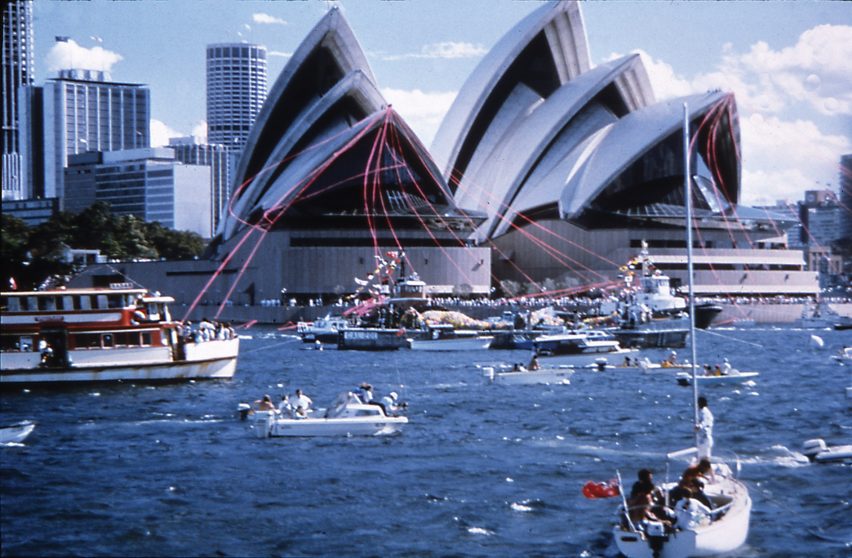
Sydney Opera House, Sydney, Australia, by Jørn Utzon (1973)
One million people reportedly attended the official opening of the Sydney Opera House in 1973, where the Queen described the landmark building as a "splendid achievement of engineering and architecture".
Designed by Danish architect Jørn Utzon and engineer Ove Arup, the now-iconic building was completed 14 years after construction began and is a key example of engineer-led late modernism.
"The Sydney Opera House has captured the imagination of the world, though I understand that its construction has not been totally without problems," noted the Queen.
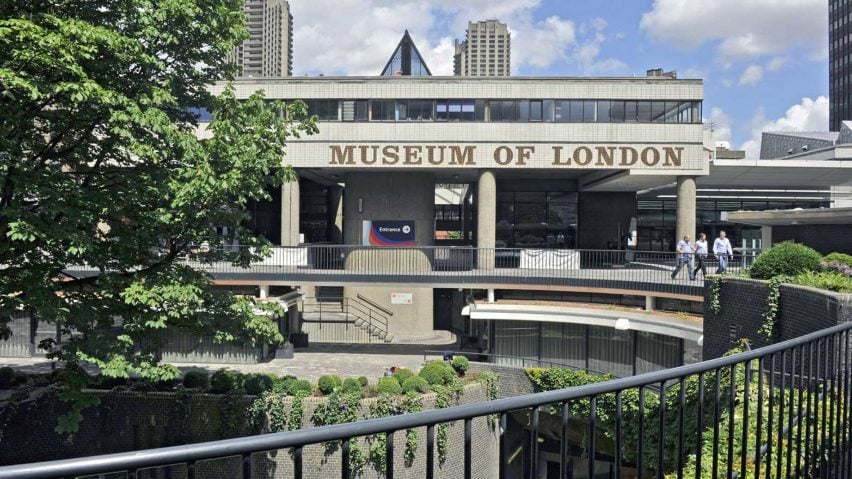
Museum of London, London, England, by Powell & Moya (1976)
Opened by the Queen alongside the Barbican Estate, the Museum of London is the largest urban history collection in the world charting the social history of the UK's capital from prehistoric to modern times.
Architects Philip Powell and Hidalgo Moya adopted what was an innovative approach to museum design at the time, laying out the galleries so that there was only one route through the exhibits.
From street level the structure is bastion-like, with the museum only accessible via raised walkways on the first floor.
In 2015, the museum announced plans to move from the Barbican site to a new home in the nearby Smithfield Market, while plans to close the existing building at the end of this year and redevelop it into a concert hall were scrapped in 2021 amid the coronavirus pandemic.
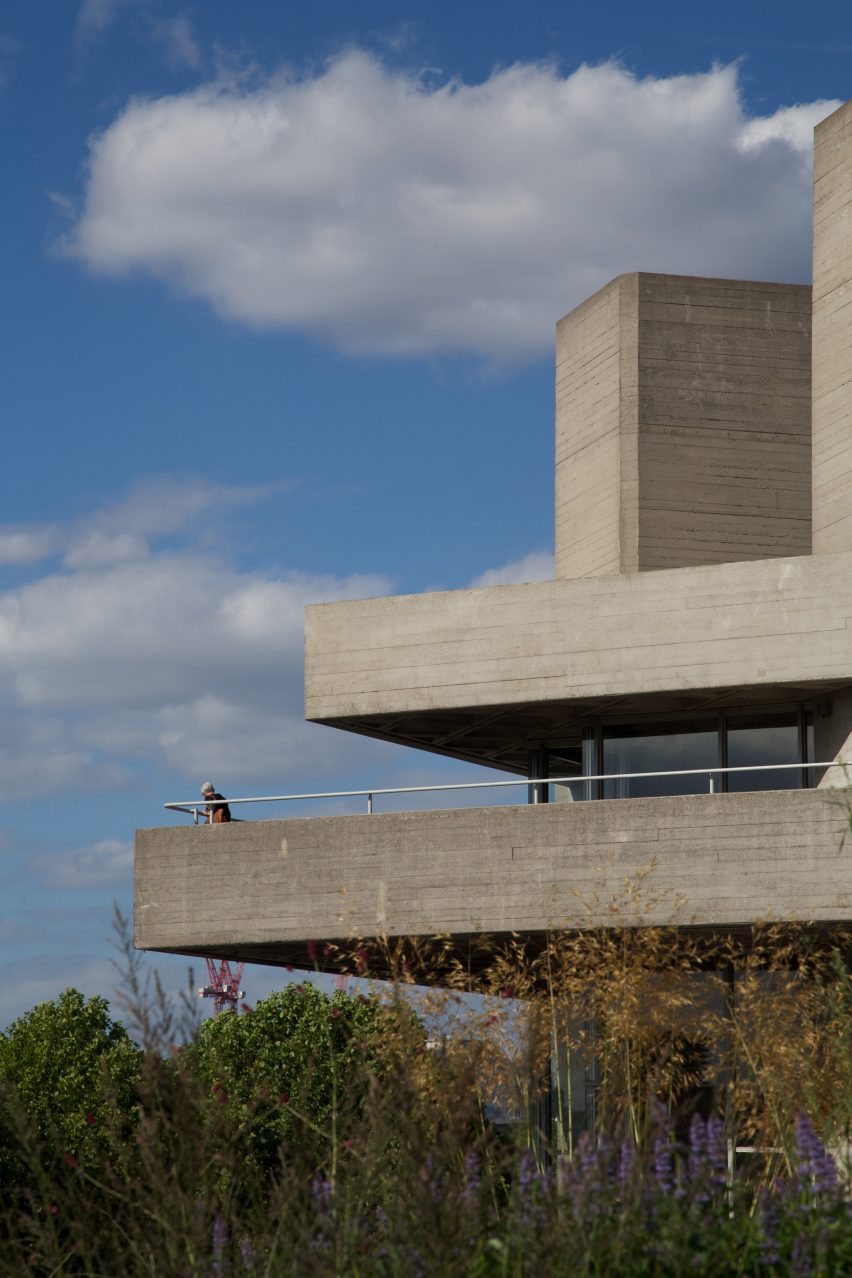
Royal National Theatre, London, England, by Denys Lasdun (1976)
Famously described by Prince Charles as looking like a "nuclear power station", the brutalist Royal National Theatre was designed by English architect Denys Lasdun.
Beset by funding issues, the building officially opened 25 years after the Queen laid a foundation stone on the site on London's South Bank.
"It stands as a tribute to all those who dreamt of it; to those who argued and fought for it; to those who designed and built it; and to those who founded and developed its famous company," said the Queen at the opening.
"I know it is the determination of the National Theatre Company to fill this building with that special type of magic that only the theatre can provide."
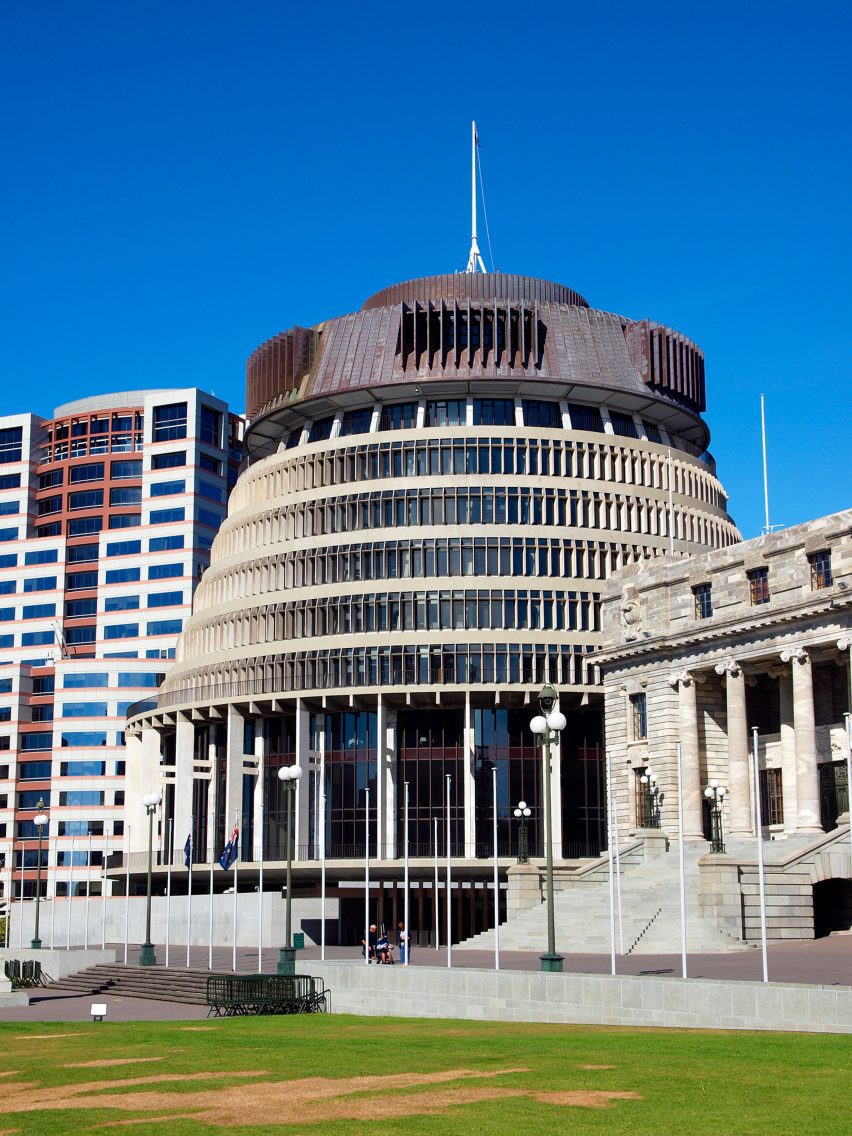
The Beehive, Wellington, New Zealand, by Basil Spence (1977)
Officially called the Executive Wing of the New Zealand Parliament Buildings, this brutalist structure is commonly known as the Beehive thanks to its distinctive shape and roof, made from 20 tonnes of hand-welted and seamed copper.
Like Coventry Cathedral it was conceived by Basil Spence, with detailed design work carried out by New Zealand government architect Fergus Sheppard and the Ministry of Works.
The 10-storey building contains the cabinet room and ministers' offices while the basement houses the government's National Crisis Management Centre, which includes dormitories and facilities to allow people to live and work there for long periods during a national emergency.
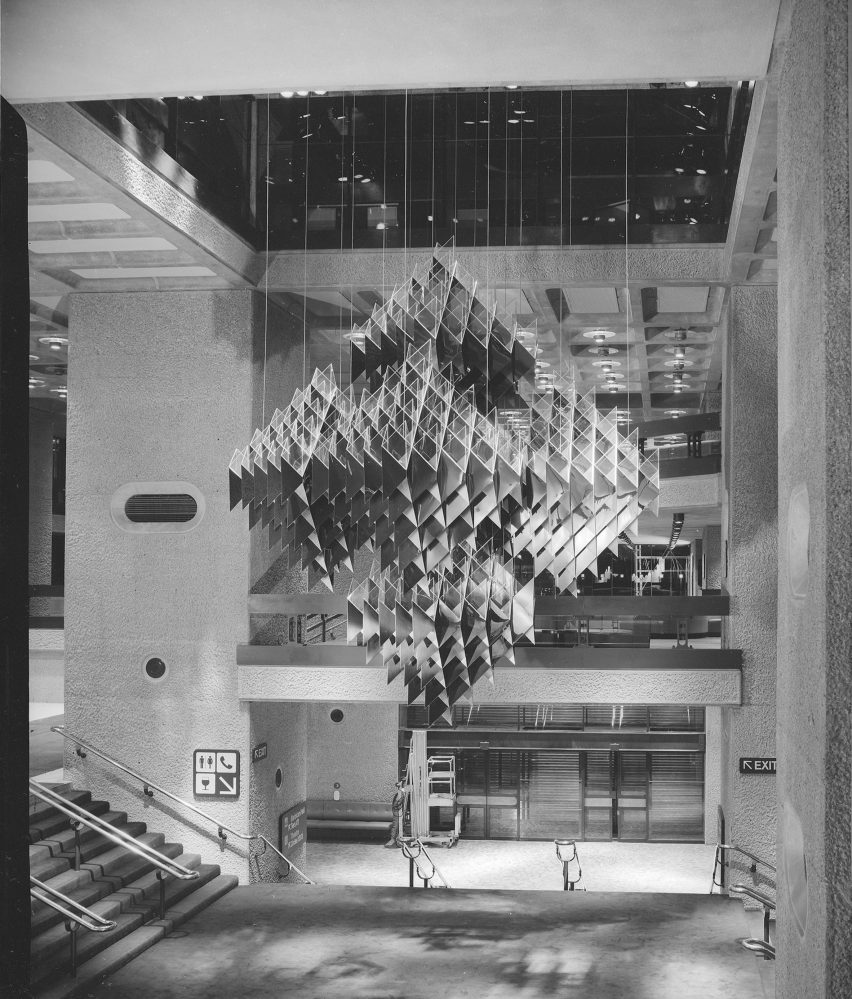
Barbican Centre, London, England, by Chamberlin, Powell and Bon (1982)
Described by the Queen as "one of the wonders of the modern world", the Barbican Centre was the largest arts centre in western Europe when it opened in 1982.
Containing a 1,943-seat concert hall for the London Symphony Orchestra and a 1,156-seat theatre for the Royal Shakespeare Company along with several gallery spaces, cinemas, cafes, and a library, the arts centre forms part of the wider Barbican housing estate.
Designed by UK studio Chamberlin, Powell and Bon it is one of the UK's most recognisable brutalist buildings.
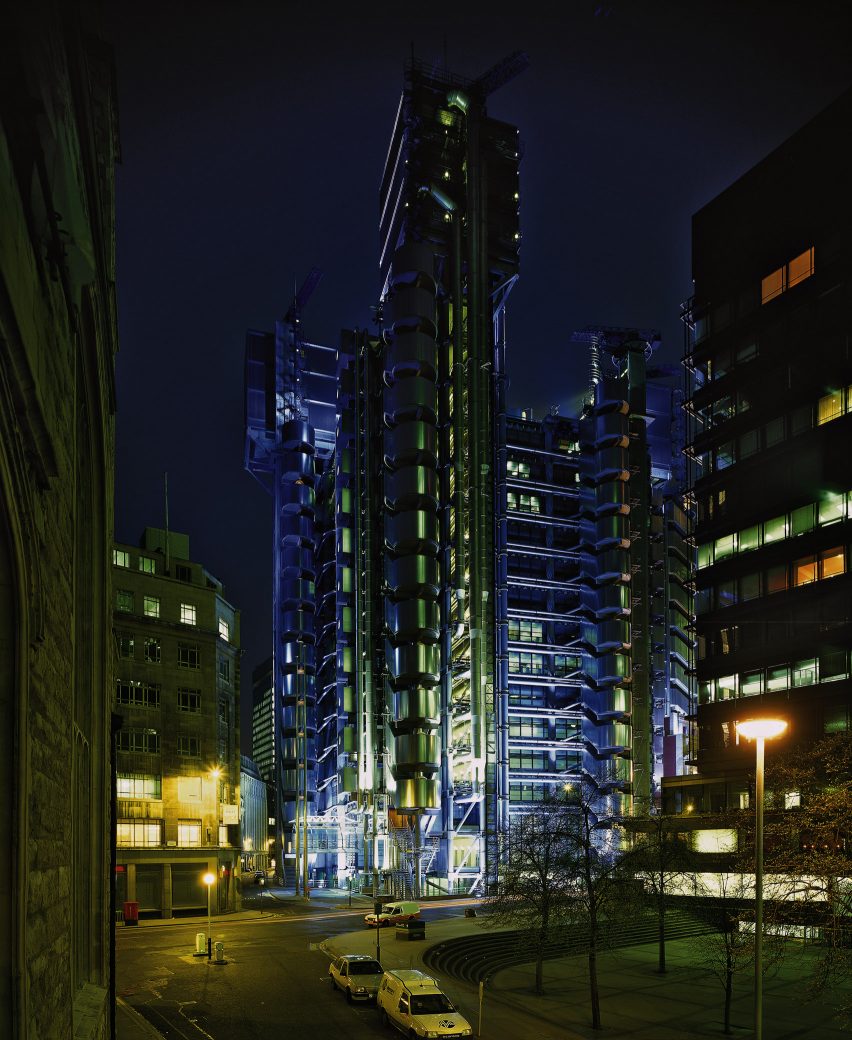
Lloyd's building, London, England, by Richard Rogers (1986)
In 1986 the Queen opened the Lloyd's building, designed by architect Richard Rogers. A key early example of high-tech architecture, the radical addition to the City of London was designed with all its building services and lifts on the outside to create clear spaces within.
"The building is, without doubt, a landmark both in terms of the skyline of the city and in the history of Lloyd's," said the Queen.
In an interview with Dezeen, Rogers recalled being "attacked by everybody" while working on the project.
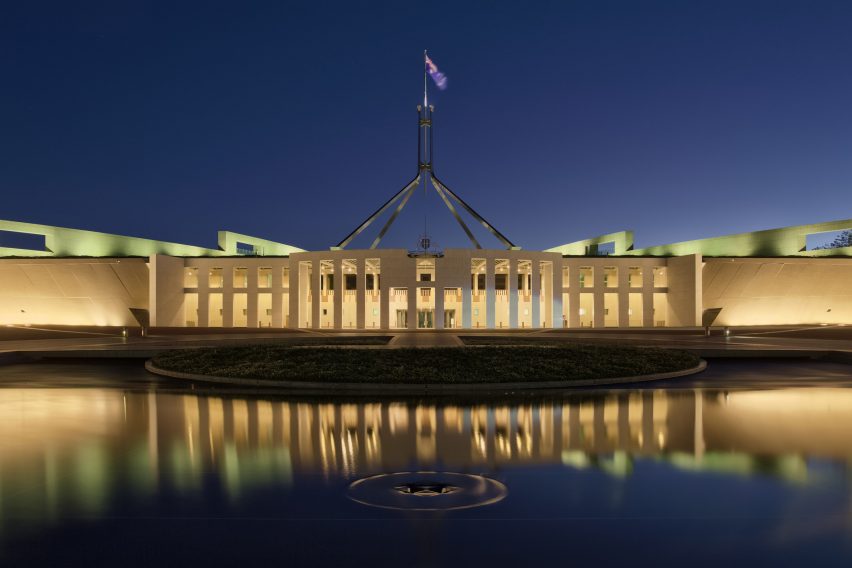
Parliament House, Canberra, Australia, by Mitchell Giurgola and Thorp Architects (1988)
As part of Australia's bicentenary celebrations, which marked 200 years since the arrival of the first fleet of British ships in the country, the Queen officially opened Parliament House.
The first permanent parliament since the proclamation of the Commonwealth of Australia in 1901, the building in Canberra was designed by studios Mitchell Giurgola and Thorp Architects.
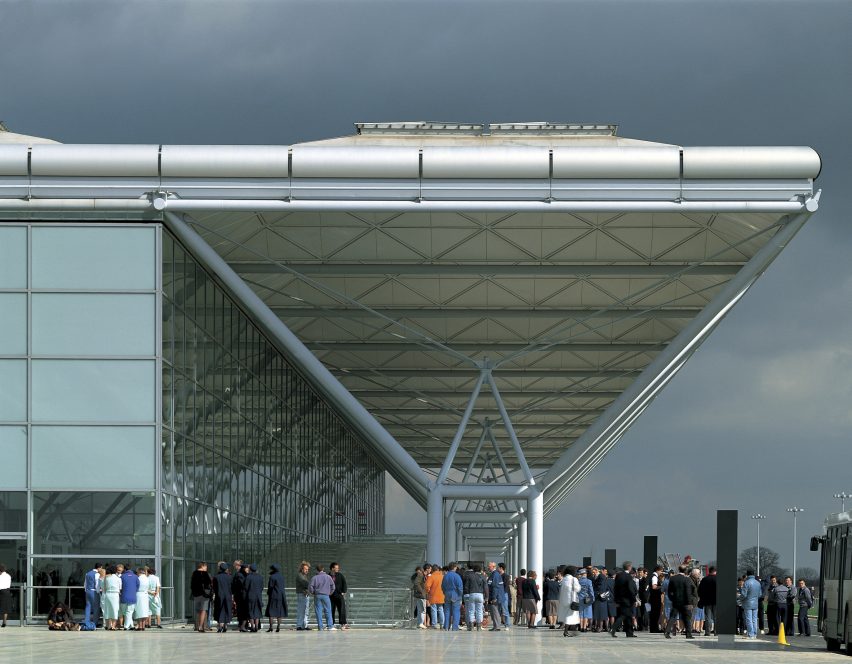
Stansted Airport, Stansted, England, by Foster + Partners (1991)
Designed by Foster + Partners to challenge "all the rules of airport terminal design", the terminal building at Stansted Airport was officially opened by the Queen in 1991. The building is a key example of the high-tech architecture style that first emerged in the UK in the late 1970s.
"It was a great moment in my life," Foster + Partners head of design Spencer de Grey told the BBC. "A lot of hard work went into the design of the building and to see it all finished with the Queen there was a wonderful occasion."
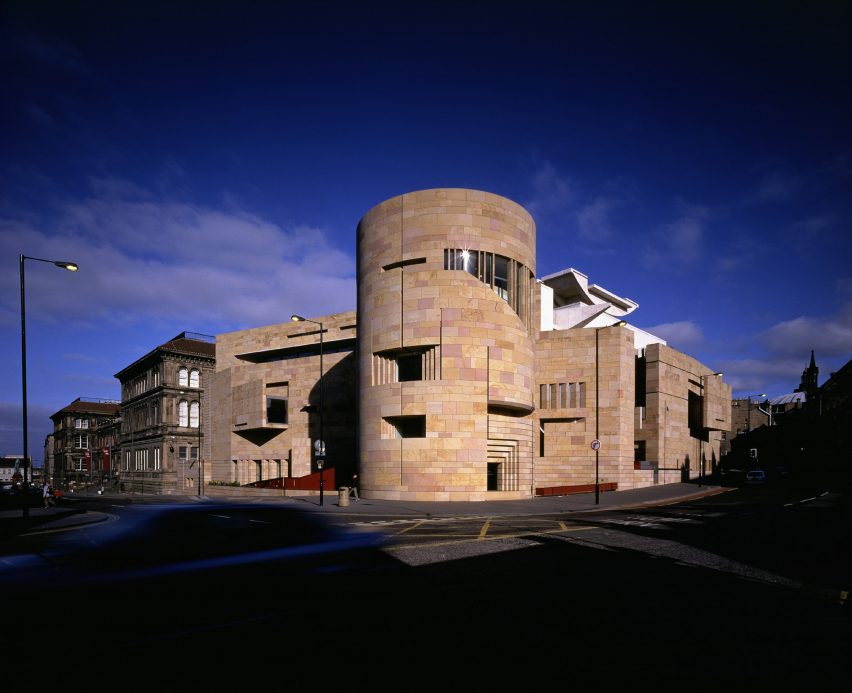
Museum of Scotland, Edinburgh, Scotland, Benson + Forsyth (1998)
Clad in golden Moray sandstone, the Museum of Scotland was designed by Benson + Forsyth as an extension to the 19th-century Royal Scottish Museum in central Edinburgh.
With its cylindrical entrance tower, the modern addition to Edinburgh's old town contains a collection that tells the history of Scotland and was officially opened by the Queen in November 1998 ahead of its public opening on St Andrew's Day.
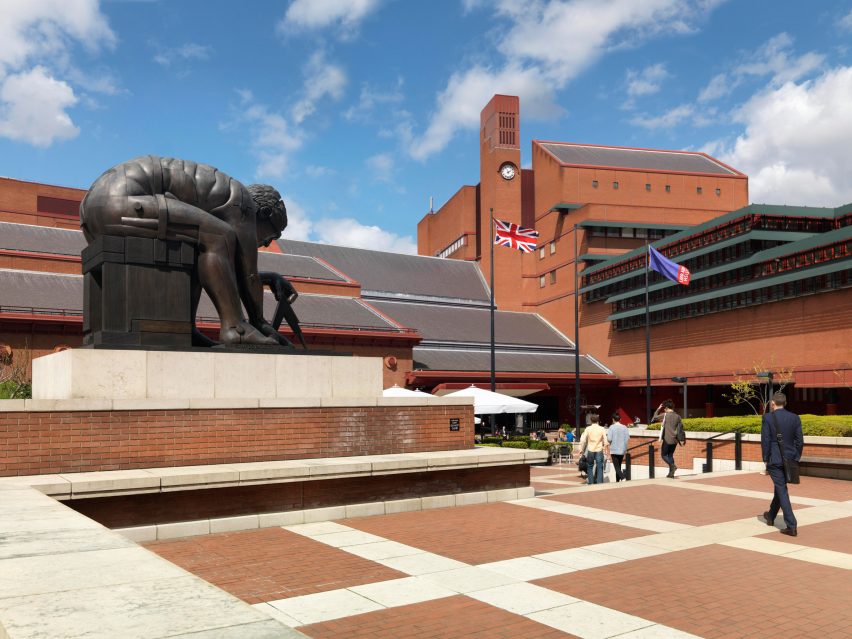
British Library, London, England, by Colin St John Wilson and MJ Long (1998)
After extensive delays and Prince Charles referring to the design as looking like "an academy for secret police", the Queen officially opened the British Library in 1998.
Designed by architects Colin St John Wilson and MJ Long, the building was completed over a decade later than expected and was the subject of a series of controversies. Referring to the delay at the opening the Queen said: "This labour of love must have seemed at times to be endless."
However, she praised the building noting that, "this is the largest public building erected in Britain this century, and it is entirely fitting that it should be a library."
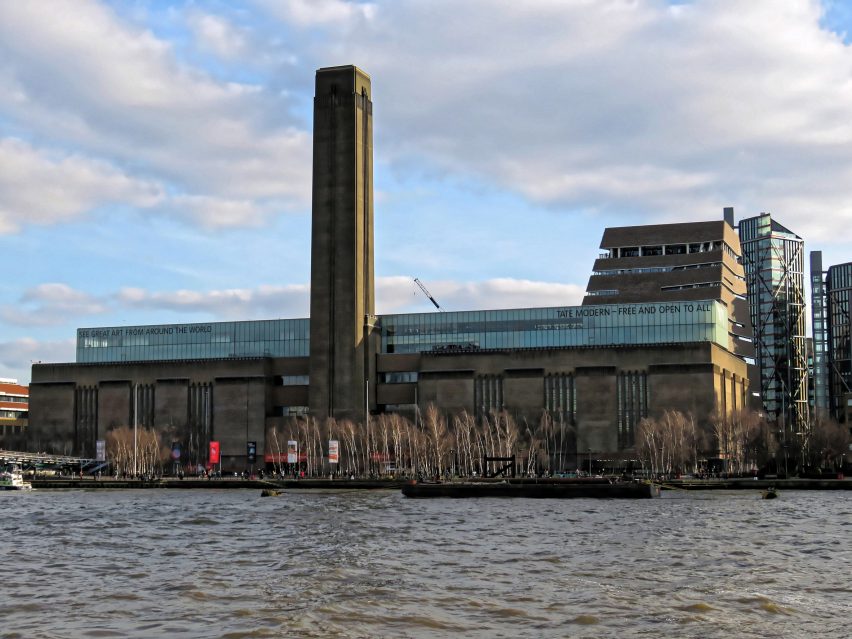
Tate Modern, London, England, by Herzog & de Meuron (2000)
In 2000 the Queen opened the Tate Modern, which was designed by Swiss architecture studio Herzog & de Meuron, on the South Bank of the River Thames in London.
The art gallery was designed to occupy the former Giles Gilbert Scott-designed Bankside Power Station, which the Queen had opened 37 years earlier in 1963.
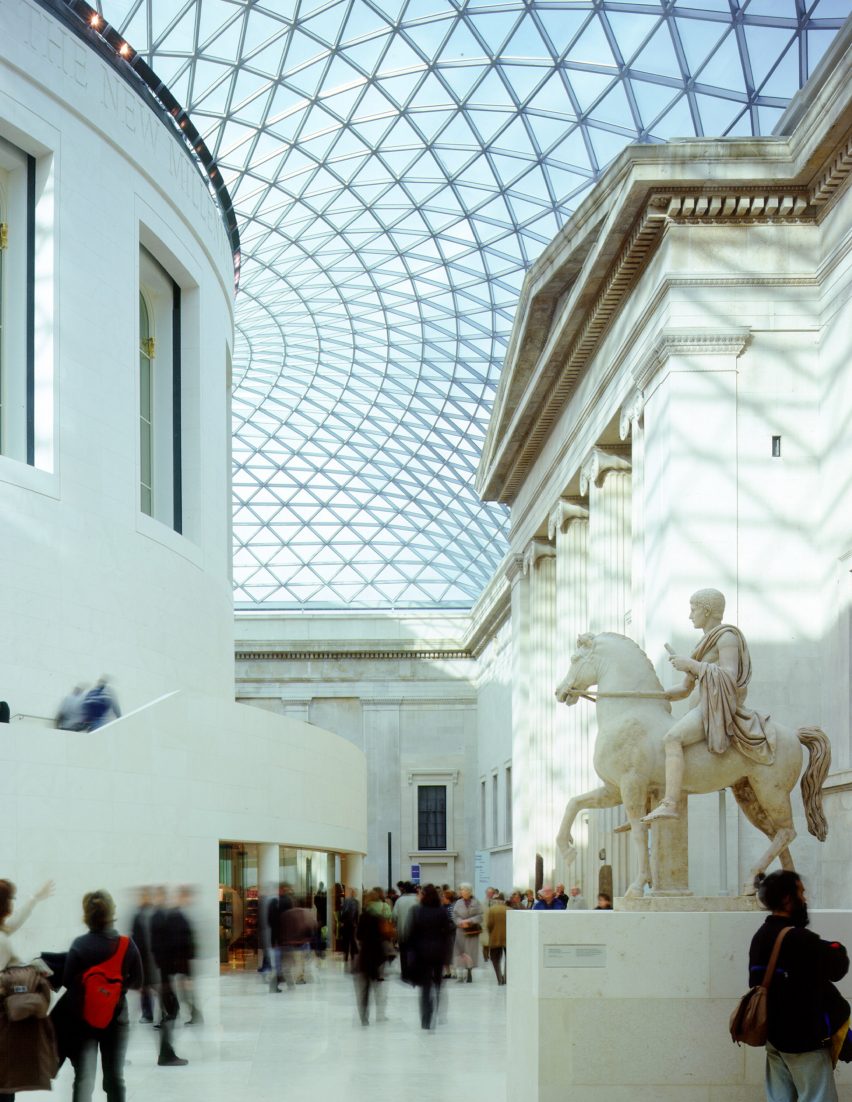
Great Court at the British Museum, London, England, by Foster + Partners (2000)
Now officially called the Queen Elizabeth II Great Court, the central courtyard at the British Museum was topped with a tessellated glass roof created by architecture studio Foster + Partners in collaboration with engineering studio Buro Happold.
The court was redesigned as part of an overhaul to the museum that added 40 per cent more space to the institution and was opened by the Queen in 2000.
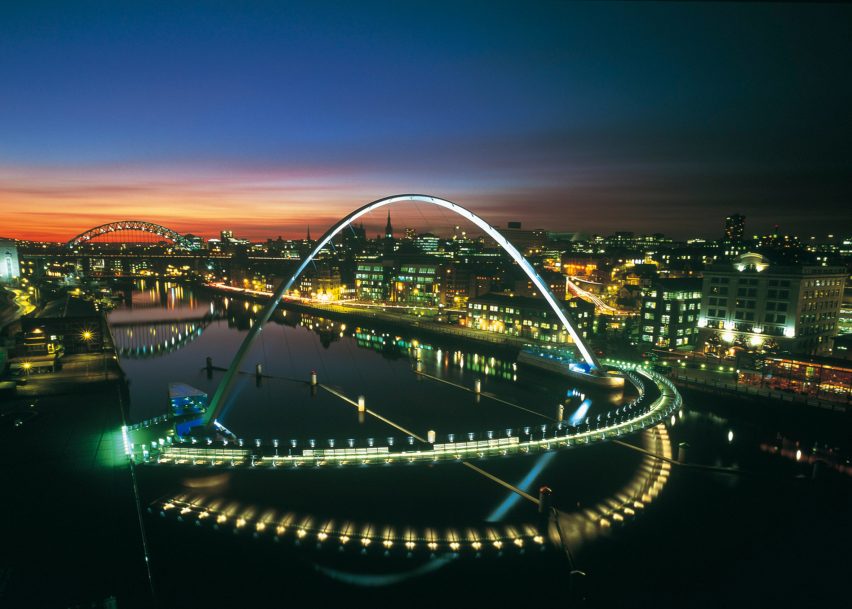
Gateshead Millennium Bridge, Newcastle, England, by WilkinsonEyre (2002)
Designed by architecture studio WilkinsonEyre to connect Newcastle and Gateshead the Millennium Bridge has a distinctive shape formed of two connected arches that rotate to allow boats to pass. This form has been likened to a blinking eye.
The bridge was officially opened by the Queen in May 2002 and won the Stirling Prize, the most significant award in UK architecture, in October that year.
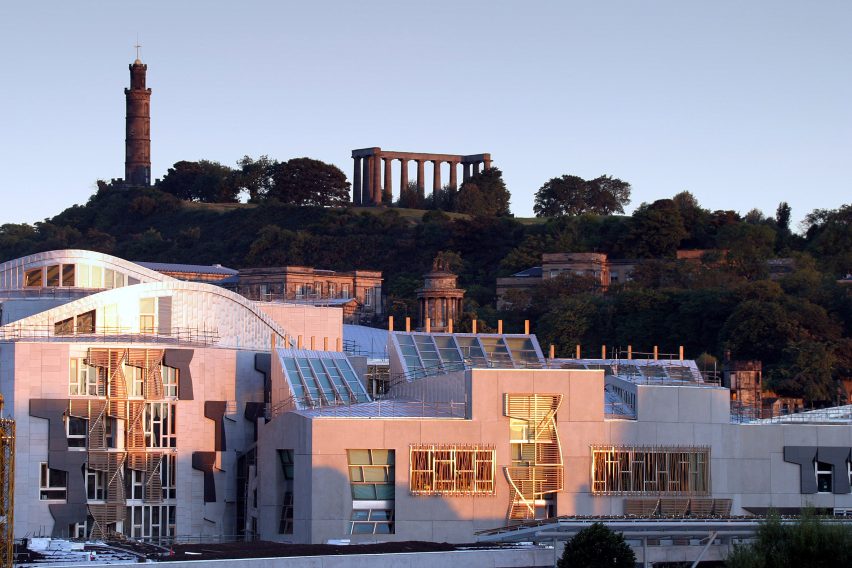
Scottish Parliament Building, Edinburgh, Scotland, by EMBT & RMJM (2004)
The highly complex and adventurous Scottish Parliament Building was designed by studios EMBT & RMJM to reference Scotland's heritage and landscape while also rejecting traditional institutionalism.
EMBT principal Enric Miralles, who died before the project's completion, drew on the forms of upturned boats on the nearby seashore and took motifs from the flower paintings of Scottish architect Charles Rennie Mackintosh in creating the structure.
The project was controversial, particularly because of costs and delays but also due to the selection of a non-Scottish architect and the building's abstract design, and became the subject of a major public inquiry that criticised the management of the construction.
However, architects and architecture critics have widely praised the building and it has won multiple awards, including the 2005 Stirling Prize.
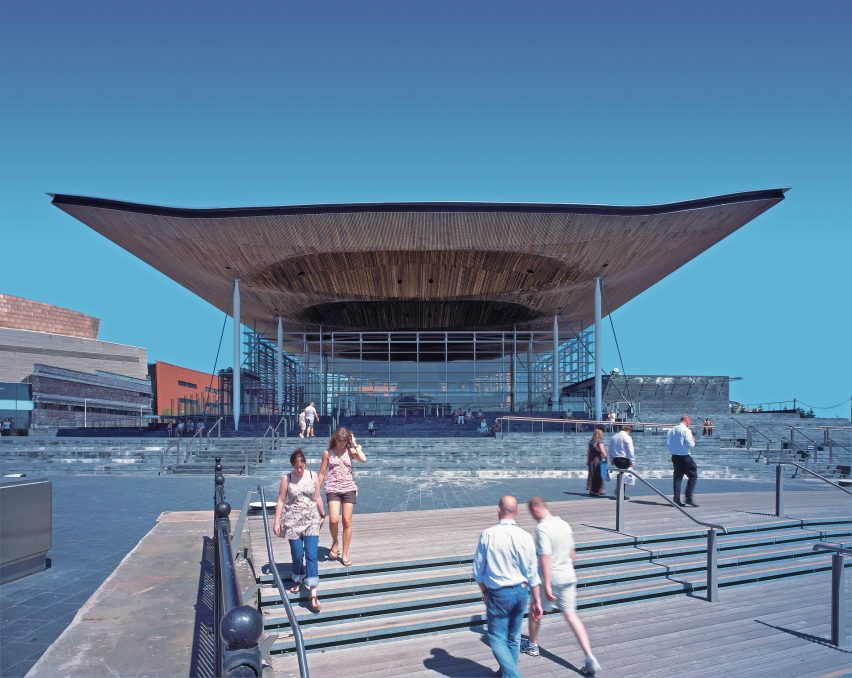
Senedd Cymru, Cardiff, Wales, by RSHP (2006)
Richard Rogers' studio RSHP, then named the Richard Rogers Partnership, was selected to design the National Assembly for Wales, known locally as the Senedd.
The building's shape is dominated by a large roof of steel and wood overhanging its glass facade, with the architects keen to convey a sense of openness to the Welsh public.
Special attention was paid to the building's sustainability, with extensive use of local materials, a ground source heating system, a biomass boiler and rainwater harvesting.
The main image shows the Queen at the openings of the Sydney Opera House, Barbican Centre, Stansted Airport, British Library, British Museum, Gateshead Millennium Bridge and Senedd Cymru.
A version of this article was originally published on 1 June to mark the Queen's Platinum Jubilee.